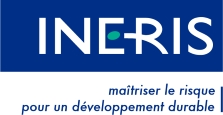Frequently asked questions
It is possible, usually at higher costs, to replace phthalates with biobased alternatives, here is a non-exhaustive list:
• POLYSORB ID 37 from Roquette
• VIKOFLEX of the ARKEMA group
• Grindsted Soft-N-Safe from DANISCO
Plasticizers of different chemical families (citrates, terephthalates) can substitute for phthalates in PVC for articles intended for children. ANSES(*), in a report of 2016, identified the following alternatives:
- TXIB (2,2,4-trimethyl-1,3-pentanediol diisobutyrate)
- ATBC (Tributyl acetyl citrate)
- DEHTP (Di (2-ethyl-hexyl) terephthalate)
- DINCH (Di-isononyl-cyclohexane-1,2-dicarboxylate)
It should be noted that these plasticizers are sometimes used in a mixture in order to achieve the same performance as with phthalates.
It is also possible to opt, instead of an alternative substance to phthalates, for a material replacing PVC: for this purpose, polyethylene or ethylene-vinyl acetate are among the most widely used materials.
(*) French agency for food, environmental and occupational health and safety
Phthalates are mainly used as plasticizers for plastics (phthalates facilitate the processing of these materials and make them more flexible).
The plastic mostly concerned is PVC (Polyvinyl Chloride) and more marginally rubber, other vinyl resins than PVC and cellulose esters.
PVC including phthalates can be used in many industries:
• Interior fittings (floor and wall coverings, ...)
• Construction (cables, linings for roofs, ...)
• Textile (shower curtains, coated fabrics, synthetic leather)
• Automotive (body protection)
• Articles for children (toys and childcare articles)
• Agro-food (cling film)
• Health (medical devices: blood bags, dialysis equipment, ...)
In a less significantly way, phthalates may also be included in the composition of other articles or in various industrial uses:
• Paints, inks, lacquers, varnishes and adhesives for professional use;
• Ceramics used in electronics
• …

